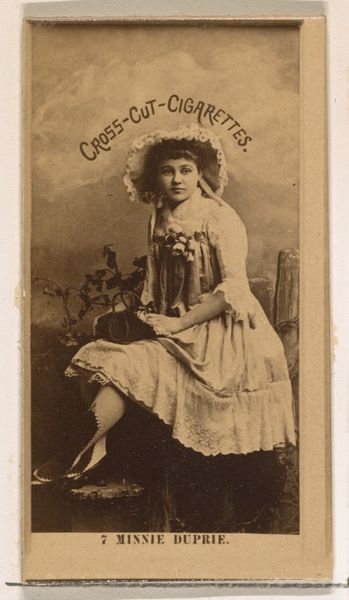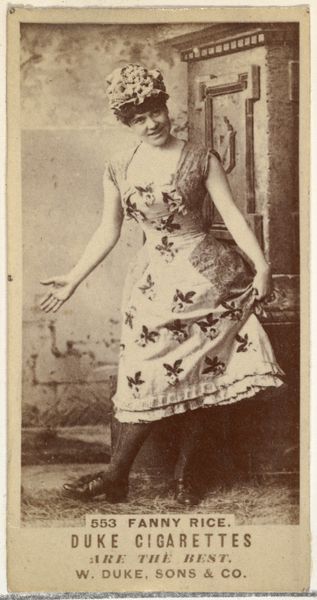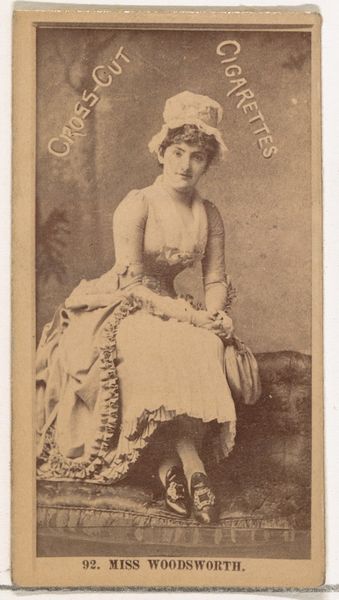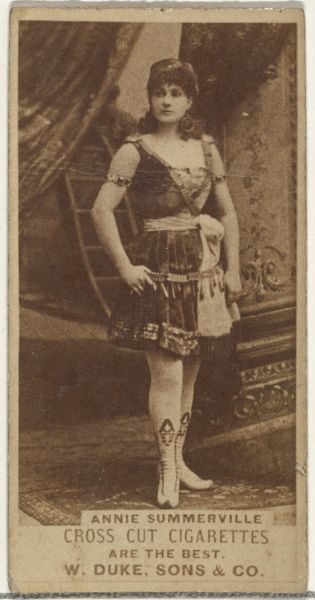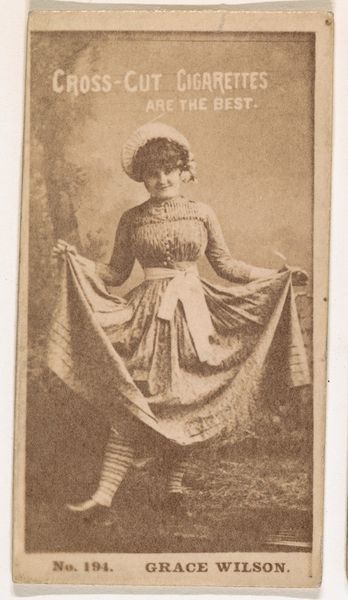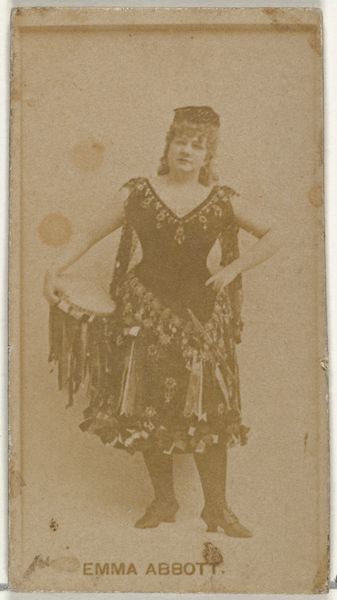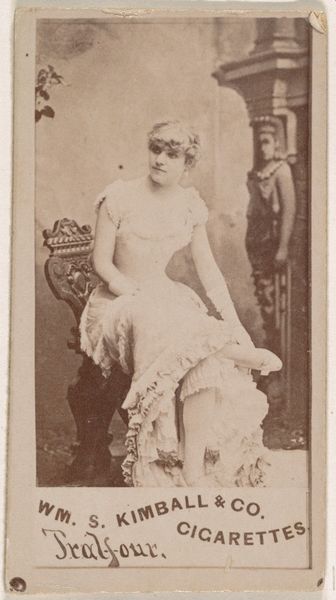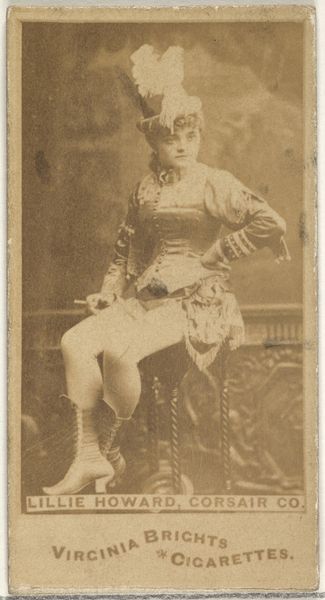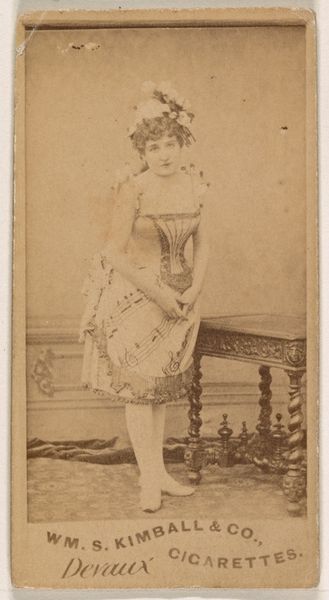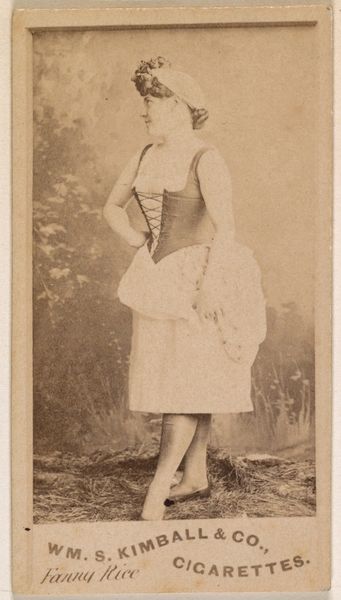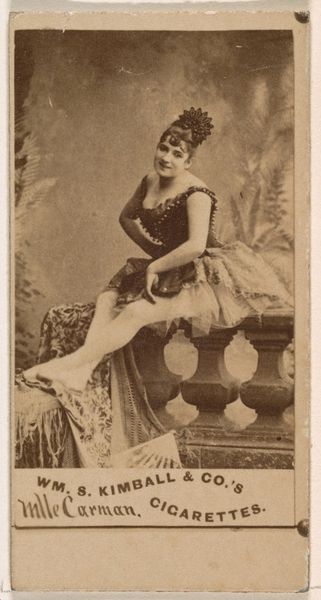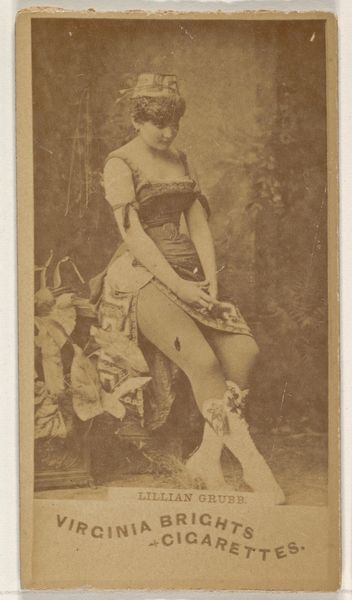
Card Number 78, Maynard, from the Actors and Actresses series (N145-1) issued by Duke Sons & Co. to promote Cross Cut Cigarettes 1880s
0:00
0:00
drawing, print, photography
#
portrait
#
drawing
# print
#
figuration
#
photography
#
genre-painting
Dimensions: Sheet: 2 1/2 × 1 3/8 in. (6.4 × 3.5 cm)
Copyright: Public Domain
Editor: Here we have "Card Number 78, Maynard," from the Actors and Actresses series, created around the 1880s by W. Duke, Sons & Co. to advertise Cross Cut Cigarettes. It appears to be a photograph or print. What strikes me is how this card intertwines celebrity, performance, and everyday consumerism. What stands out to you? Curator: Well, let's consider the materiality of this object. It’s not just a photograph, it's a commodity, a vehicle for advertising. The 'art' here serves a very specific, capitalist function. Think about the process: From photographing the actor, to mass-producing these cards. What does that tell us about how value was constructed then, linking fame to tobacco consumption? Editor: That's a compelling point! I hadn’t thought about it as part of the industrial process itself. Does the mass production devalue the portrait as art? Curator: It challenges traditional notions of art. Is it "high art" when it's distributed with cigarettes? We need to think about how these objects circulated, who collected them, and what purpose they served beyond aesthetics. They represent labor, distribution networks, and the persuasive power of images in a burgeoning consumer culture. Editor: So it’s more about understanding its role within the economic and social structures of the time, not necessarily its aesthetic qualities. Curator: Precisely. And that extends to the very paper it's printed on, the ink used. The means of production are as crucial to understanding this object as any perceived artistic merit. Editor: I see what you mean. I learned to look beyond just the surface representation to the larger networks involved. Curator: Exactly, that broader context reveals so much. It moves art history into a fascinating exploration of how things are made, used, and valued.
Comments
No comments
Be the first to comment and join the conversation on the ultimate creative platform.

